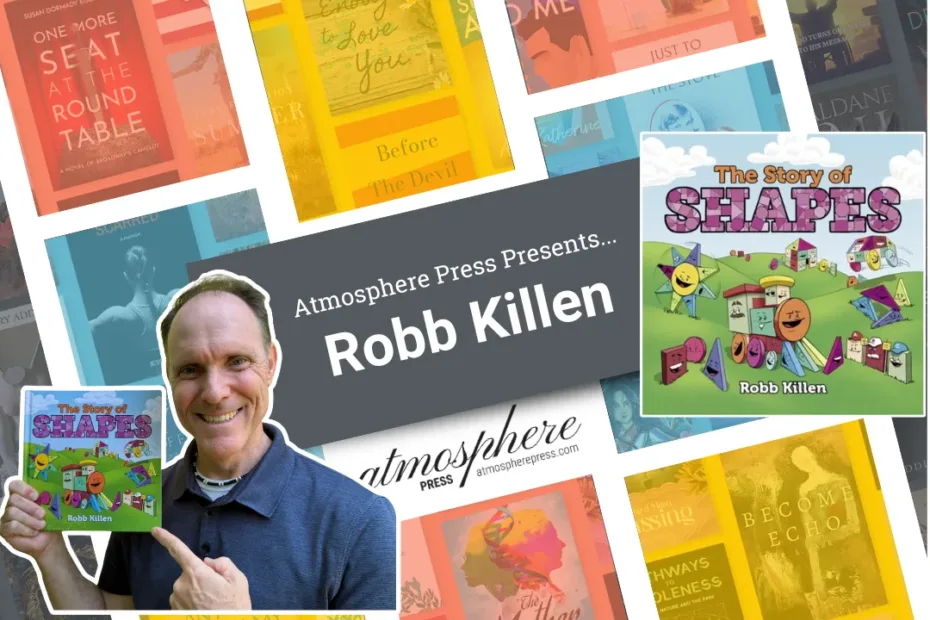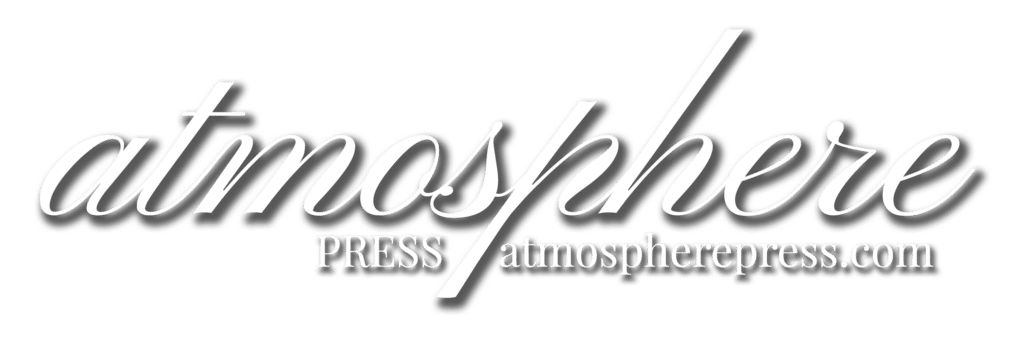An Interview with Robb Killen

Born in Hawaii, Dr. Robb Killen began his career as a professional puppeteer at Opryland, USA, and that has extended to acting, script writing, set building, and more. In 2005, Robb made the transition to education, becoming a school counselor and administrator in both public and private schools. He developed SEL (social and emotional learning) programming, using puppets to teach character. He has a Doctorate in Educational Leadership, focusing on puppetry’s impact on character curriculum.
Today, Dr. Killen is an impassioned creative and innovative educator. Currently, as a licensed professional school counselor and author, he lives in Franklin, Tennessee, with wife Stacy, son Henry, and dog Daisy.
What inspired you to start writing this book?
I know that inspiration can come from so many places. Seeing what a hot and divisive topic ‘diversity’ can be these days, I wanted to have a simple to understand and non-threatening way to facilitate discussions with children. I’ve found that children are able to process these types of heavier topics if it is presented in a way that is understandable and relatable.
For a few years there was a buzz term floating around about being ‘color blind.’ This concept was used in the vein of ‘I don’t see different skin colors, I just see people.’ Although there are some great concepts that can come out of that line of thinking, it actually negates diversity. It seems to insinuate that we all look the same, and therefore are all the same. In reality, we all look different from each other, we all think about things differently, and we all have different talents and skills. Rather than glossing over or burying those differences, let’s acknowledge them, let’s celebrate them, and let’s see how we can use those complementary differences to create something beautiful. This is the concept behind The Story of Shapes. Certainly, taking out the intensity of this multi-layered topic and putting it on inanimate objects such as shapes makes the depth of discussion more feasible for younger readers.
I think children and families would enjoy this book, not only for its timely and important message, but because it’s just a fun book with vivid illustrations and witty puns throughout. I envision parents, teachers, school counselors, and other educators using this book as a springboard for discussion on diversity. There are lots of activities that can spin off from this book, including building beautiful structures and pictures using squares, circles, and triangles, as well as asking the child which group of shapes he or she identifies most with, and why.
Tell us the story of your book’s current title. Was it easy to find, or did it take forever?
The title of my current book is The Story of Shapes. I don’t have a grand story about the title genesis, but it did take me several revisions to finally settle on this title. I knew that I wanted the title to say a little about the story so that it would not appear to simply be a young child’s book on shape recognition. I toyed around with the idea of ‘How Squares, Circles, and Triangles became Shapes,’ but that began to get way too wordy, so I simply settled on, The Story of Shapes.
Describe your dream book cover.
I love all that Bill Kersey did with the colors and illustrations in The Story of Shapes. My dream cover for this particular book, however, would be to add some wonderful texture to it. I envision having the three shapes (squares, circles, and triangles) raised just slightly on the cover to give depth and a kinesthetic feel for a reader picking it up for the first time.
If your book had a soundtrack, what are some songs that would be on it?
Great question! The easy cliche answers would be songs like Black or White from Michael Jackson, Imagine by John Lennon, and We are the World. But truly, I think Count on Me by Bruno Mars encompasses the idea of The Story of Shapes. An ideal world would be where we can count on our friends and neighbors to always be there for us, and everyone realizes that we are stronger when we are united, rather than separate.
What books are you reading (for research or comfort) as you continue the writing process?
I love just about any picture book that is witty and a bit quirky. Of course, you can’t beat the classics, such as Dr. Seuss who, like myself, attempts to tackle difficult topics using fun, non-threatening characters. My all-time favorite of his, which is not the most well-known, is The Sneetches.
One of my current favorites to read to children in my work with students is Don’t Trust Fish by Neil Sharpson. Again, the witty quirkiness of the book draws me in like a magnet. It’s a lot of fun to read aloud.
What other professions have you worked in? What’s something about you that your readers wouldn’t know?
I grew up and lived in Hawaii until my college years. In my childhood, I had typical teenager jobs: paper route, mowing lawns, and cleaning carpets on cruise ships. That last one may not be so normal.
In my early twenties I became a performer at Opryland USA (closed in 1998). I was a puppeteer and character performer in the theme park, and later at other venues across the county. I was honored to have puppeteered on two Jim Henson movies (Muppets from Space and The Adventures of Elmo in Grouchland). I also had the privilege of puppeteering on commercials for Big Lots and Domino’s pizza. From there, I wrote, built sets, and puppeteered on a wonderful PBS show called Wisharoo Park.
Once all the entertainment work dried up for me in the early noughties, I decided to go back to school and get my master’s degree in school counseling. Later, I received my doctorate degree in educational leadership and have served in both private and public schools as an educator and administrator. Over the years, I have been extremely passionate about social and emotional learning (SEL), leading to my doctoral dissertation entitled, The Effects of Puppetry in Improving K-2 Student Retention and Application of Character Curriculum. This passion has led to my latest occupation as an author.
My first book, entitled The Story of Shapes, was just released in July 2025. It is a wonderful story about diversity and how differences can actually make us stronger collectively. I am hoping to publish my second book, which is a picture book to help children navigate traumatic events.
Who/what made you want to write? Was there a particular person, or particular writers/works/art forms that influenced you?
Truthfully, I did not enjoy writing as a child. At that age, writing was associated with schoolwork and something that I was forced to do. It wasn’t until my freshman year of college, in an English 101 class, that I discovered the joy of writing. It wasn’t until that point that I discovered creative writing. I didn’t much enjoy writing essays and research papers, but I fell in love with writing for fun and a creative outlet. In fact, I found that I actually got lost in my writing and enjoyed the process of thinking about an idea, writing it down, and sharing it with others. After that experience, whenever a professor gave me the option of doing a creative assignment, I absolutely chose the creative option. I also love puns, and creative writing has allowed me to perfect my punny humor and ‘dad jokes.’
Where is your favorite place to write?
I get inspiration for book ideas all the time. Someone may say a phrase or do something interesting and a kernel of an idea for a book is born. Years ago, I used to keep a micro-cassette tape recorder in my car so I could document my ideas as they came to me. These ideas often popped up while driving and audio recording was much safer than trying to write and drive at the same time.
These days, I typically use my phone and speech to text when an idea comes to me. Additionally, as weird as it may sound, I get lots of creative ideas in the shower. There’s something about an enclosed space (blocking out the world) with warm water and steam that allows for the creative juices to flow.
When I actually sit down and type out a manuscript, however, my choice would be to write somewhere where I’m surround by lots of windows. I absolutely love to be in nature, so anytime I can settle in for a good writing session and have beautiful views of trees, lakes, or rivers around me, I am in my element and time seems to fly by.
What advice would you give your past self at the start of your writing journey?
If I could jump in a time machine and talk to myself in the past, here’s what I’d say:
Dear Past Self,
Don’t give up! You may only have a nugget of an idea but jot it down anyway. You never know when that glimmer of an idea may blossom into something bigger. Do the writing for the joy of writing. It doesn’t matter if you don’t think it’s good enough for others to read. Write it anyway. Every word you write down makes you a better author. You have a story to tell and only you can tell it from your perspective. Your experiences can benefit others.
Love,
Your Future Self.
P.S. You may want to buy stock in a small start-up company called Apple. This could help fund your future book projects.
What’s one thing you hope sticks with readers after they finish your book?
All of my books and projects fall more or less under my overarching goal of leaving behind a legacy of doing good; packing something positive into the world. I love writing about topics that build character, social and emotional maturity, and, of course, dignity.
The central message of The Story of Shapes is that we, as human beings, are designed to be ‘stronger together.’ Some may feel that differences give us the opportunity to compartmentalize or segment our social groups, but I truly feel that our inherent differences are meant to complement each other. No matter if it’s actual visible physical trait differences or more internal differences such as personality, talents, skills, and preferences, whatever the differences, they are meant to complement each other and to be used alongside others who are different. The idea is not to have unity despite differences. Rather, it’s to have unity while embracing differences. Those around us who are different are not always a threat or our competition per se. They need to be viewed as partners with us as we make our neighborhoods, communities, and, ultimately, the world a much better place. Someone who thinks differently than I do may also see solutions that I am initially blind to. What I love about The Story of Shapes is that when the shapes finally learn to work together and build beautiful things together, if you look closely, you can still see the individual shapes. We can retain our uniqueness all the while coming together to build beautiful things.
Are you a writer, too? Submit your manuscript to Atmosphere Press.

Atmosphere Press is a selective hybrid publisher founded in 2015 on the principles of Honesty, Transparency, Professionalism, Kindness, and Making Your Book Awesome. Our books have won dozens of awards and sold tens of thousands of copies. If you’re interested in learning more, or seeking publication for your own work, please explore the links below.
